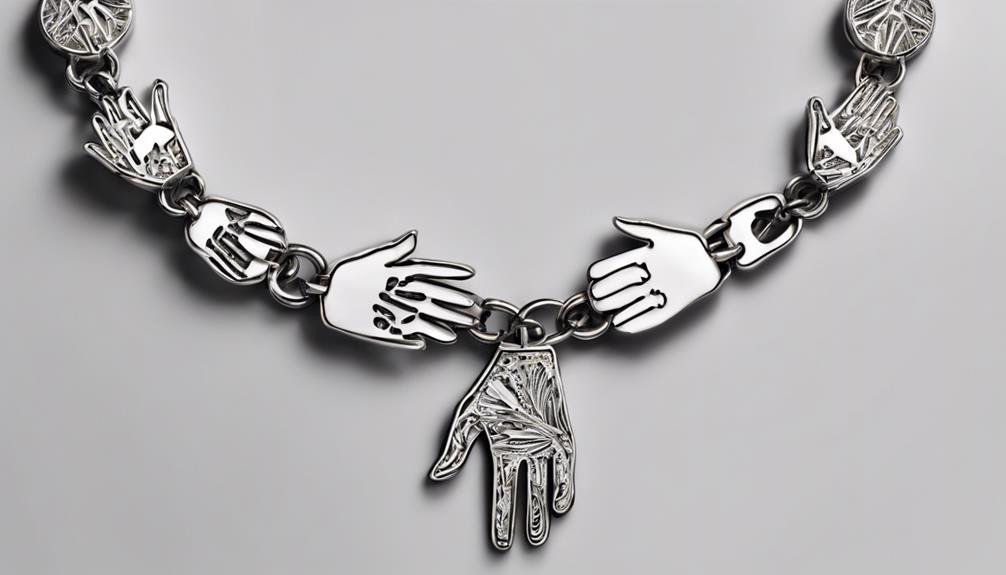Using baby sign language helps boost early cognitive development by engaging your child’s brain and supporting motor skills. It encourages them to connect gestures with meanings, which strengthens neural pathways and enhances language learning. Signs also motivate your little one to explore and communicate more actively. As they understand symbols and expressions, their confidence and social skills grow. Keep exploring this topic to discover even more ways sign language can support their development.
Key Takeaways
- Gestures engage the brain, enhancing neural connections linked to language, memory, and attention.
- Using signs supports fine motor skill development essential for cognitive growth.
- Early signing fosters symbol recognition, boosting understanding of language and object relationships.
- Sign language encourages active participation, motivating further language learning and cognitive exploration.
- Incorporating signs creates a holistic learning environment that nurtures overall brain development.

Introducing baby sign language can remarkably boost your child’s early cognitive development, giving them a way to communicate before they can speak. When you start teaching your baby simple gestures, you’re not just helping them express their needs—you’re also laying a foundation that supports their overall growth. Gestures offer numerous benefits, as they engage your child’s brain in ways that words alone can’t. By encouraging your baby to use signs, you’re helping them develop fine motor skills, improve their ability to recognize symbols, and build connections between actions and meanings. These gesture benefits extend beyond communication; they also foster important cognitive processes like memory, attention, and problem-solving.
As your baby begins to understand and use signs, they reach key language milestones earlier than they might without sign language. For example, many children start signing their first words around 8 to 12 months, often before they can verbalize them. This early ability to communicate can reduce frustration for both you and your child, creating a more positive and engaging interaction. When your baby signs “milk,” “more,” or “all done,” they’re not only expressing immediate needs but also practicing the act of conveying abstract concepts. This process helps them grasp the idea that symbols represent objects or feelings, which is a critical step towards spoken language.
Introducing sign language into your routine also accelerates language acquisition because it encourages your child to pay closer attention to language cues. They begin associating gestures with specific words, which reinforces their understanding of vocabulary and sentence structure over time. This active engagement with language supports neural development, strengthening pathways that are essential for speech and comprehension. The more your baby practices these signs, the more confident they become in their ability to communicate, which in turn motivates them to learn new words and expressions.
Furthermore, early signing can boost your child’s social and emotional skills. When they can effectively communicate their needs and feelings, they develop a sense of control and independence. This boost in confidence often translates into increased curiosity and *enthusiastic* to explore their environment, fueling their overall cognitive growth. Additionally, understanding the importance of early communication methods can help parents choose the most effective tools for supporting language development. By integrating baby sign language into your daily interactions, you’re not only helping your child reach language milestones sooner but also nurturing their brain’s development in a holistic way. This proactive approach to communication creates a supportive learning environment where your child’s cognitive abilities can flourish, setting a strong foundation for future learning and social success.
Frequently Asked Questions
When Is the Best Time to Start Teaching Baby Sign Language?
You should start teaching your baby sign language around 4 to 6 months old, as this is when they begin reaching sign language milestones. Early introduction promotes parental involvement, which helps your baby learn faster. By actively signing with your little one, you foster communication skills and cognitive growth. Starting early guarantees your baby feels confident to express needs, making sign language a powerful tool for early development.
How Long Does It Typically Take for Babies to Learn Signs?
You might wonder how long it takes for your baby to learn signs. Typically, infants reach sign language milestones within 4 to 6 months of consistent practice. The infant signing duration varies, but with daily repetition and positive reinforcement, your baby can start using basic signs in just a few weeks. Remember, patience is key, and celebrating small successes keeps both of you motivated along the way.
Can Sign Language Reduce Frustration and Tantrums in Babies?
Imagine opening a door to your baby’s world, where feelings flow smoothly instead of bubbling over. Sign language helps reduce frustration and tantrums by bridging communication barriers, allowing your little one to express needs and emotions clearly. This enhances emotional regulation, calming their mind and body. As a result, you’ll notice fewer meltdowns and more peaceful moments, fostering a stronger bond built on understanding and shared connection.
Is Baby Sign Language Suitable for All Languages and Cultures?
You might wonder if baby sign language suits all languages and cultures. While many signs can be adapted, cultural differences and language compatibility play a big role. Some gestures may not translate well across cultures, and certain signs could conflict with local customs. It’s important to tailor signs to fit your culture and language, making communication meaningful and respectful. This way, baby sign language becomes a useful tool for your family’s unique context.
What Are Common Signs to Start With for Infants?
Think of baby sign language as a bridge connecting your little one’s thoughts to their actions. Common signs to start with include “milk,” “more,” and “all done,” which hit key gesture milestones and sensory signs. I remember a parent who began with these, and within weeks, their baby communicated needs early, reducing frustration. Starting simple helps your infant express themselves and strengthens your bond effortlessly.
Conclusion
By introducing baby sign language, you’re planting seeds of communication that bloom into vibrant thoughts and bright ideas. It’s like opening a window to your little one’s world, where words and feelings dance together in harmony. As you nurture this silent language, you’re sculpting a foundation for curiosity and confidence to grow, turning tiny gestures into mighty bridges that connect hearts and minds. Watch as your baby’s cognitive landscape blossoms with every sign you share.











